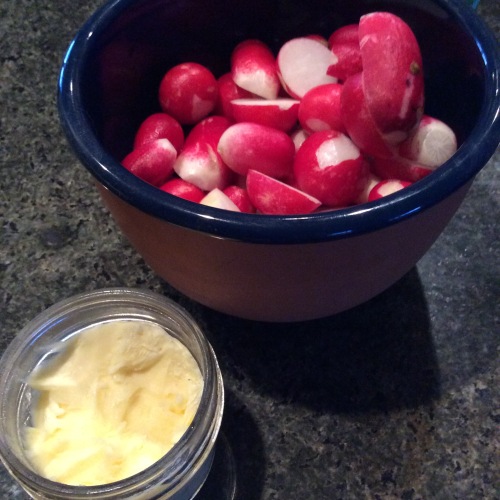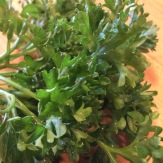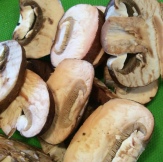We are in the midst of our final family visit for the holiday season. Our son, his wife, and their two daughters are visiting from Silicon Valley. We had a couple of days of quiet, and now there is once again pandemonium. We enjoy it.
The family arrived the day after Christmas. We had old fashioned New Mexico posole, as we weren’t sure when they would arrive with all of the bad weather in this part of the country.
The next night, we celebrated our son’s new position with champagne, blinis, sour cream, and salmon roe. Then Christmas crackers for the girls. Finally, brisket that had been cooking all day and served with potato latkes along with green beans and mushrooms. It was a festive evening, indeed.
The recipe for brisket is Susan’s. She got it from a friend many years ago when we lived in Houston. Since then, it has been a big family hit. Sarah took the recipe with her to New York City where she often made it for family meal in the restaurants where she worked. She says that whenever it was served, cheers went up from all of the cooks and servers. The secret to success is long, slow, braising with flavorful seasonings. Plan on at least 10 hours of cooking after an overnight marinade.
My daughter-in-law makes wonderful latkes, so I faced that challenge with a little trepidation. There are lots of recipes out there for latkes, and most folks are convinced that their mother’s are the best. I have modified the recipe in Amanda Hesser’s The Essential New York Times Cook Book (W.W. Norton & Co., New York, 2010). The book is an outstanding modern replacement for Craig Claiborne’s classic, The New York Times Cook Book. The latkes got my daughter-in-law’s approval, so I guess they were alright.
RECIPES
Brisket
Ingredients
- 2 tablespoons liquid smoke
- 2 tablespoons Worcestershire sauce
- 1 teaspoon garlic salt
- 1 teaspoon onion salt
- 1 teaspoon celery seed
- salt and pepper
- 4-6 pound brisket, trimmed
Method
- Combine the liquid smoke, Worcestershire sauce, and seasonings in a flat roasting pan
- Marinate the brisket in the marinade, covered, overnight in the refrigerator. Turn occasionally, and pierce the meat with a fork to make sure the meat absorbs the marinade
- Place the pan, covered, in the middle of an oven set at 200°F. Cook at least 10 hours, turning frequently. Adjust seasoning with salt and pepper.
- When well done, remove from the oven, slice on the diagonal thinly, and serve immediately. Should serve 4 to 6.
Potato Latkes
Ingredients
- 2 large russet potatoes, peeled
- ½ large yellow onion
- 2 jumbo eggs, separated
- 1 tablespoon potato flour
- 2 teaspoons salt
- 1/8 teaspoon ground black pepper
- 1/8 teaspoon ground white pepper
- peanut oil for frying
Method
- Grate the potatoes and onion. Purists will insist on a grater. A food processor fitted with the grater blade is the fast way.
- With your hands, squeeze as much of the liquid from the grated potato-onion mixture as you can. Transfer the mixture to a large bowl.
- Stir the egg yolks, potato flour, salt, and pepper into the mixture, using your hands to make sure the ingredients are evenly combined.
- Beat the egg whites until they form stiff peaks. Fold into the potato mixture.
- In a large cast iron skillet, heat about ¾ inch of peanut oil until it casts a sheen. In handfuls, drop the potato mixture into the hot oil being careful not to burn your hands. Fry until the bottoms of the pancakes are golden brown. Turn carefully and fry the other side until it is golden. Remove from the oil. Drain on paper towels. Serve immediately while still warm. Makes about 8 large latkes.




























































